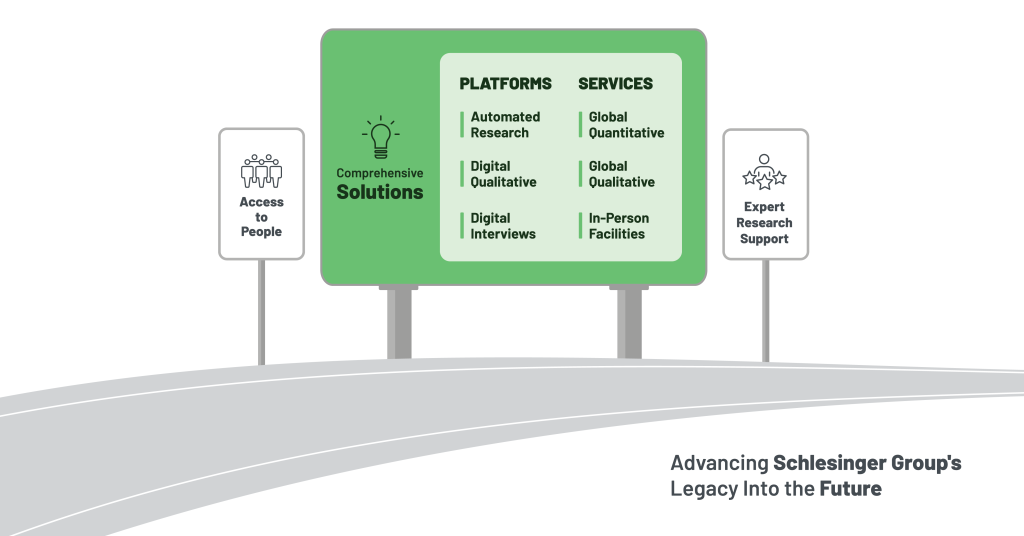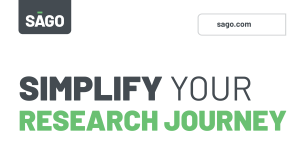The Future of Qualitative Research: Q&A with a Global Qual Leader
Are you ready to take your qualitative research to the next level? With technology constantly advancing, the possibilities for innovative new approaches are endless. Embrace the changes and jump on board with the future of qualitative research with this Q&A session featuring Sago President, Isaac Rogers.
-
What is the role of “gamification” in qualitative and/or quantitative research in the near future?
- Gamification absolutely has a future role to play. Today, there are small ways we “gamify” engagement, but it’s usually at the edges and not core to the way respondents are working with us; things like “best mobile diary video” and “the first person to complete all assignments in QualBoard.”
-
Many people are talking about AI in qualitative research and performing qualitative research at the speed and cost of quantitative. Does this thinking concern you, given that both are very different methodologies? What do you tell clients who need to rush a qualitative study?
- The recent rise in talks about AI related to ChatGPT has certainly raised this issue more frequently. I think the desire is for qual to get “faster” and so people see a new path, like AI, and want to apply that to the problem. There is a lot we can do to make qual faster in general, even without AI, and that might allow us to compete more directly with the timelines of quant. The whole manual workflow around qual screening/recruiting/launching studies could be reimagined, saving days of time in a typical study. AI might come in to aid this workflow, too, but we have low-hanging fruit in becoming more efficient with our field times.
-
Is there a slowdown in business due to companies’ budgets needing to be faster to approve with the current economy?
- Sago saw a slowdown in new project inquiries starting back in Q1 of 2022. To be clear, we are talking about high single-digit/low double-digit decreases in new projects; a shift, but not a complete pause in work. This slowdown continued through early 2023 but is now showing signs of a thaw.
-
How have things differed by category? (For example, healthcare, CPG, retail, etc…)
- There are differences across various categories; for example, in healthcare, we’ve seen some of the highest increases in incentive costs. However, we’re seeing changes and challenges across all categories.
-
Are there a lot of setbacks when it comes to conducting focus groups?
- I can’t say that matches our experience at Sago; by and large, the typical focus group was still the dominant method pre-Covid, and while it could be argued it was “flat or slightly down” in the 2018/2019 era, the difference was minimal in our data.
-
How do you suggest researchers manage respondent fatigue with Fair Market Value (FMV)? Clients are not changing their FMV even though outside forces are affecting it.
- I think this is a perfect example of where we need to reduce the friction we put in front of respondents to even participate. Trim screeners, communicate the value prop of the research rather than this “blind study”, and make research a lower effort activity for panelists.
-
Is there an incentive increase across the board for all qualitative research or just for in-person research?
- It’s across the board, with pockets of variance. In some markets and in some demos, we see in-person rates staying lower. However, in-person has skyrocketed when it comes to higher socio-economic status or categories like B2B.
-
Could the lack of interest of people becoming respondents also be fear of online privacy and scam issues in sharing their information?
- I think that’s absolutely part of it. A common piece of feedback we get is research seems invasive, and the point of all the data collection seems unclear. As an industry we could do a much better job of being transparent.
-
What is the going on with learning communities?
- We are seeing a rise in communities in online qual. These are usually one-to-six-month groups we retain for a variety of research tasks over a period of time. Almost like “customer advisory councils.”
-
The real world has an overall aging demographic; are marketers (and their market researchers) adapting to that? Is recruitment still primarily targeting younger (smaller) demographic subgroups?
- Younger demographics are difficult to recruit (especially men under 25), and higher income brackets are even more difficult. We have pockets of disengagement in research in a variety of areas.
-
Do you think the trend toward less probing in qual is related to the length of audio and video of In-depth Interviews?
- It could. Researchers could be probing less in their one-on-ones. However, we also see researchers are more apt to “skip questions” these days and not feel pressure to complete the entire guide. I think this is just reflective of the maturity of the method; we avoid some of the performative steps to become more efficient.
-
Are clients doing more ‘do it yourself’ qualitative research?
- Do-it-yourself research has absolutely skyrocketed in the last few years and continues to rise.
-
 Are you seeing clients providing more lists of customers from which to recruit? Shouldn’t they – in the modern digital age of gathering customer data – have lots of customers and their data that makes them pre-qualified for qualitative?
Are you seeing clients providing more lists of customers from which to recruit? Shouldn’t they – in the modern digital age of gathering customer data – have lots of customers and their data that makes them pre-qualified for qualitative?- Unfortunately, customer lists haven’t improved in quality. We’d love to find a middle ground where the quality of a customer-provided list helped us recruit— but in most cases, they are comparable to the generalized panelist databases we already have.
-
How can clients improve when it comes to recruiting? How can profiling be better used?
- I think this comes back to really focusing on what’s important in the screening process versus what’s “nice to have”. In most studies, especially CPG, almost half the questions we ask during screening are “nice to have”, and when we’ve tested side-by-side research where we trimmed out the “nice to have” information, the impact on the research was imperceivable yet we created a massively simpler process for the respondent.
-
If screeners are made shorter, we are more likely to get participants that don’t precisely fit the research needs. Yet, the cost of getting respondents is increasing. How can we balance these opposing forces?
- It’s a risk to manage, but I think researchers who ask intelligent screening questions won’t see a significant decrease in quality. In fact, lowering the barrier to entry for everyone, if we can pare down screeners, might increase quality because fresh respondents would be more likely to participate!
-
How has the number of respondents per group changed over time (e.g., from ten to only six or eight per group), and has the length of interviews (LOI) of focus groups changed over time, pre-, during, or post-Covid (90 minutes to 60, etc.)?
- We’ve seen a dramatic increase in in-depth interviews, and strong double-digit growth versus “groups”. LOI has not deviated much.
-
One concern about AI-generated responses is how bad actors might use them to generate fake answers on screeners or boards. What tools is Sago developing to counteract this issue?
- We are working with industry-leading partners to make sure our fraud detection tools can cross reference against known AI patterns; there will be more innovation here in the coming years.
-
Frequently, many qualitative hurdles are due to clients needing to be more familiar with qualitative research (e.g., long screeners). What are you doing to stop qualitative research from being hamstrung by people who don’t understand this kind of research?
- I think people often need to vote with their checkbooks. We will soon live in a world where screener length drives the cost of the study. That’s been a bit of a “no-no” so far in qual, but it’s coming, nonetheless.
-
Do you find participants are more difficult to engage in a digital group compared to in person?
- Generally, no. Life is about compromise and while we have great engagement in all methods, there are pros and cons to every method, and I wouldn’t say one has unique challenges that others don’t face as well.
Whether it’s gamification or the use of AI, the changes to research have been undeniable, and qualitative research is no exception. As technology continues to advance, it is expected that these trends will continue to evolve, shaping the future of qualitative research in exciting new ways.
Delve into the impact of digital qualitative research tools on the future of market research and learn about critical considerations in participant engagement in the on-demand webinar, “The Future of Qualitative Research: Insights from a Global Qual Leader.”
















